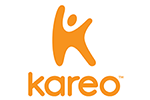Want to jump straight to the answer? The best electronic medical record system is AdvancedMD. Read on to find out why.
No matter the size of your practice, you need a good electronic medical record (EMR) system.
Having digital, searchable, and constantly accessible information about each patient in the practice helps medical professionals make the best healthcare decisions for their patients in the shortest amount of time possible.
Protecting this sensitive data is important too, and the best EMR systems keeps data safe, while making it easily accessible to the people who need it. Proper documentation leads to a more efficient billing system and reduced time spent on paperwork as well.
Compare Quotes From The Best Electronic Medical Record Systems
Get matched up with a EMR system that fits your specific needs.
>> Compare Quotes
Here is our collection of the best EMR systems currently on the market, as we aim to help you find the right system for the needs of your particular practice.
The 10 Best Electronic Medical Record Systems
The 10 best EMR systems are:
- AdvancedMD
- Athena Health
- CareCloud
- Greenway Health Intergy
- Kareo
- NextGen Healthcare
- Sevocity
- TheraNest
- Virence Health Centricity
- WebPT
Keep reading to find our in-depth reviews of each one.
1. AdvancedMD
- For any size practice
- Detailed scheduling interface
- Prescription tracking
- Many customizable features
>> Compare Quotes
Regardless of whether you need basic or advanced features in your EMR, AdvancedMD has you covered.
It is versatile enough to fit the needs of many different practices.
The primary dashboard available through AdvancedMD does require some work to learn to use well, but once you figure this system out, you’ll be able to do some impressive things to help your practice operate more efficiently.
Pros
- Detailed scheduling interface
- Versatile EMR for multiple sizes of practices
- Plenty of customizable features
- Excellent prescription tracking capability
Cons
- Requires some time to learn to use it efficiently
- Price is a little higher than some others
2. Athena Health
- Web-based EMR
- Easy to learn and use
- Best for small practices
- Wide range of features
>> Compare Quotes
Small and average sized practices often need an easy-to-use EMR system, as they may not have the time or personnel required to do a deep drill down into a complex piece of software. The AthenaHealth EMR fits this need. It’s fully web-based, so it will work for the practice where personnel use a variety of types of input devices.
Pros
- Extremely easy to learn to use
- Scheduling features are easy to sort and customize
- Web-based EMR is compatible with many kinds of devices
- Good customer service
Cons
- Not made for large sized practices
- Because it’s web-based, you’ll need strict access security measures in place
3. CareCloud
The CareCloud EMR interface gives you the ability to clearly determine how the patient flows through your practice. This helps spot potential bottlenecks, making your processes more efficient in the process.
They’re also web-based, so you can use them with any input devices.
The interface is highly adaptable too. That’s perfect for the ever changing world of laws and regulations.
Pros
- Up-to-date interface is easy to use
- Strong at tracking patient flow
- Very competitive pricing
- Regularly tweaked to match new healthcare regulations
Cons
- May be too simplistic for larger practices
- Small practices must subscribe to Concierge service
4. Greenway Health Intergy
- Reasonably priced
- Highly flexible
- Outstanding customer service
- Multiple training options
>> Compare Quotes
Greenway Health’s Intergy EMR is a very flexible system.
That’s because it’s highly customizable—which makes it perfect for large medical practices that handle a wide variety of cases and patients.
It may take you awhile to figure out all of the different aspects of Intergy, but it’s definitely worth the time spent.
Pros
- Highly flexible EMR system
- Nice collection of shortcuts to streamline work
- Outstanding customer service and training options
- Reasonable pricing tiers
Cons
- Interface could use an update
- Will take some time to learn all of the custom options
5. Kareo
- Made for smaller practices
- Good support & training
- Reasonably priced plans
- Very easy to use
>> Compare Quotes
For those practices that need ease of use above all else, the Kareo EMR is a smart choice. This system’s interface is a little older than some others, but it still will work nicely for small and average sized practices. Those working at your practice will be able to pick up the basics of the EMR quickly, allowing for you to be up and running with very little time spent.
Pros
- Made especially for smaller sized practices
- Very easy to use
- Pricing is reasonable
- Good support for implementation and training
Cons
- Interface seems a little dated
- Not really made for large or complex practices
6. NextGen Healthcare
- Easy to start using quickly
- Multiple customization options
- Excellent staff training
- Excellent customer service
>> Compare Quotes
For average and smaller sized practices, NextGen has the kind of customer support that these practices often need. A practice of this size may not have the tech staff required to run training and other services, but the NextGen customer service and training capabilities are extremely strong. Should your practice need to customize a certain aspect of the EMR, this is relatively easy with the NextGen EMR.
Pros
- Excellent customer service and training
- System is easy to start using quickly
- Offers multiple customization options
- Has some very low priced tiers
Cons
- Not powerful enough for large practices
- Takes a bit of time to learn the system’s nuances
7. Sevocity
- Best for smaller practices
- Extremely easy to use
- Basic customization features
- 24/7 customer service
>> Compare Quotes
The Sevocity EMR has quite a few good features for small and mid-sized practices, but it likely will not be powerful enough to meet the needs of larger practices. The interface in this EMR is extremely easy to use, and you can perform basic customization features. The customer service people are available 24 hours a day.
Pros
- Very good customer service features
- Offered at a desirable price point
- Features are easy to use
- Especially good for smaller practices
Cons
- May not have enough customization for large practices
- Some training features are lacking
8. TheraNest
For practices that need to be able to access the EMR interface using multiple types of devices, TheraNest is a smart choice. You can use a traditional computing system to run TheraNest, or you can access it with smartphone apps. It even has a client portal to allow clients to schedule their own appointments or to submit forms.
Pros
- Includes a mobile app option
- All information is web-based
- Includes a client access portal
- Learning curve is less than some other EMRs
Cons
- Some pricing tiers seem a bit high
- Security measures needed for fully web-based system will be off-putting for some practices
9. Virence Health Centricity
- Easy to use & navigate
- Multiple tracking features
- Well-designed mobile app
- Good all-around EMR
>> Compare Quotes
For small to medium sized practices, Centricity from Virence Health is an ideal option. It has multiple features that give smaller practices the ability to track data in a similar manner to what a larger practice traditionally has been able to do. Centricity has a mobile app, so personnel at a medical practice can use it in the manner that makes the most sense to them.
Pros
- Good all-around EMR
- Software is easy to navigate
- Works especially well for small and average sized practices
- Includes a well-designed mobile app
Cons
- Its customization features may not be good enough for large practices
- Pricing is a little high
10. WebPT
- Made for outpatient practices
- Easy to use interface
- Access through mobile devices
- Extremely reasonably priced
>> Compare Quotes
For practices that specialize in outpatient services, including occupational, speech, and physical therapy, WebPT has a platform that’s ready to use. This is a web-based solution, so personnel at the practice can access it using a multitude of devices. It has a strong customer service reputation, offering access to support at any time.
Pros
- Extremely reasonably priced
- Made specifically for outpatient practices
- Includes access through mobile devices, if needed
- Interface makes it easy to spot the information you need
Cons
- Some aspects of the software are restrictive in how you must enter data
- Not going to work as well for inpatient types of practices
How to Choose The Best EMR System For You
Finding the best electronic medical records system for your particular practice becomes easier when you focus on the specific needs of your practice. Figure out which areas of your practice need the most help, and focus on an EMR system that excels in those areas.
Here are 10 of the areas we weighed when creating our list of the best EMR systems.
1. Automatic Reminders
A big part of managing a patient’s care is maintaining a regular schedule of appointments. With certain EMR systems, you can set up an automatic reminder system that alerts the patient about upcoming appointments or about reminders to set an appointment. The EMR system could send a text message, make an automated call, or send an email to the patient, depending on the patient’s preference.
Automatic reminders will save time for the staff at the practice, freeing them up for other tasks. These reminders also reduce the number of appointments that patients forget about and miss, which makes your practice more efficient.
2. Scanning Documents
By selecting an EMR system that allows for document scanning, you will be able to match whatever needs your billing system requires for supporting documentation for claims.
Rather than submitting these documents via fax, printout, or email, you can simply digitize them and add them to the patient’s EMR. Should the billing service need these documents for an insurance claim, they will be readily available, eliminating wasted time and the potential for lost documents.
3. Sending Prescriptions
Within the majority of EMR systems, you will have the option of submitting patient prescription drug orders electronically to the pharmacy, using an e-prescription system.
Sending prescriptions electronically is safe and efficient, ensuring that the order for controlled substances travels only to the patient’s pharmacy of choice, eliminating the chance of the patient losing a handwritten prescription.
With an e-prescription, you also eliminate the chance of an error at the pharmacy because of unreadable handwriting on the part of a doctor.
4. Specialty Practices
If your practice has a specific area in which it operates, you may need to track atypical data about patients.
You may need an EMR system that gives you the ability to customize data fields and to adjust how the system stores the data. A vendor may need to help you customize the system after installation, so if you have special needs for tracking data, always ask the vendor about how it handles this type of situation.
In other cases, the vendor may have a specialty specific EMR system or add-on service that will perfectly meet your needs. Tracking this type of information can be a significant hindrance to your practice when you must do it by hand, so having an EMR system that can match your specific needs is incredibly important.
5. Systems Integration
If your EMR system has the ability to integrate with multiple systems already in use at your practice, this streamlines record keeping.
This feature is especially important for meshing the EMR system with the billing system you have in place, for example. Whether your practice sends its billing information to an outside service or does billing in-house, having integration between the EMR system and the billing system saves quite a bit of time and reduces coding errors.
Should your practice have an affiliation with a larger network, such as a hospital, integrating your EMR with the hospital’s system simplifies the patient care process. The EMR vendor can help you figure out how its system may be able to integrate with other systems you already have in place.
6. Task Reminders
Every medical practice has hundreds, if not thousands, of mundane tasks to perform on a daily basis. Whether you’re awaiting results from tests sent to an off-site lab or you need reminders to check with other colleagues about a patient’s status, certain EMR systems make this process far easier than others.
With timestamp deadlines attached to the various reminders, a doctor can be certain to have all of the required tasks finished regarding a certain patient’s case before it’s time for the patient’s appointment. With the tasks finished ahead of time, the doctor will not waste time searching for information or making calls while the patient sits idle in the exam room.
7. Template Creation
Say your practice sees a certain type of disease or condition on a regular basis in the community. With the right EMR system, the medical team could create a template that contains information about treating the particular condition, ensuring that all of the doctors and nurses follow the same steps.
This saves time in treating this common condition, while also reducing the possibility of mistakes.
8. Tracking Patient Flow
Something that you may not think about when comparing EMR systems is the way they can track patients flowing through your office.
For example, you don’t want patients occupying exam rooms waiting for a certain doctor, when that doctor cannot see the patient for at least 45 minutes, leaving other patients stuck in the waiting room, rather than being in an exam room, receiving treatment from other doctors.
Your EMR system may be able show exactly where bottlenecks are occurring in the patient flow in your office, helping you become more efficient. However, this is not a feature that all EMRs will provide in an easy-to-understand manner.
9. Tracking Prescriptions
When you have patients who take multiple prescription drugs, keeping on top of potential side effects and drug interactions is a time consuming process. Before the advent of EMR systems, the patient may have given a hand-printed list of drugs to the doctor for inclusion in the patient file. The list may or may not have been accurate or up to date.
By selecting an EMR system that allows prescription drug tracking within the patient’s records, spotting drug interactions will be easier and will occur in a timely manner. Doctors also can see any drugs the patient has tried in the past that did not work or that created unwanted side effects, avoiding trying those drugs again in the future.
Additionally, should a patient show an allergy to a certain class of drug, this information is readily available to the doctor in the digitized patient record. No longer will the doctor need to rely on a patient’s memory regarding drug allergies, which may lead to errors.
10. Vendor Responsiveness
Picking the right vendor is an extremely important part of choosing the EMR system as well. Even if the EMR system is great, it will be nothing but a headache for your practice if the vendor support is not up to par.
Some practices need more responsiveness from the vendor than others. Some practices want to be able to access help or to ask questions of the vendor any day of the week and any time of the day. Others may be able to live with a vendor that’s only accessible during normal working hours.
If your practice does not have a person or department that handles IT, you may be able to hire a vendor that can deliver these features for you.
Summary: Finding the Best EMR Systems
Although you will find some vendors attempting to use the terms EMR and EHR (electronic health records) interchangeably, they technically have a few differences that you should understand.
- EMR systems: With an EMR system, a single practice will digitize the patient’s chart. This includes all of the information about the patient’s medical history from doctors at the practice only.
- EHR systems: With an EHR system, you’ll have the digitized patient chart found in EMR, but you’ll find records from all doctors who have treated the patient. Multiple practices may share the patient’s EHR with each other.
The EMR system simplifies the ability of a single practice to care for the patient, helping the practice send out reminders to the patient for upcoming tests or health screenings. Finding just the right EMR system will produce significant benefits for patients and for those working in your practice, making the process of caring for patients more streamlined and more successful in the long run.
Compare Quotes From The Best Electronic Medical Record Systems
Get matched up with a EMR system that fits your specific needs.
>> Compare Quotesfrom Quick Sprout https://ift.tt/2yCAVWR
via IFTTT










